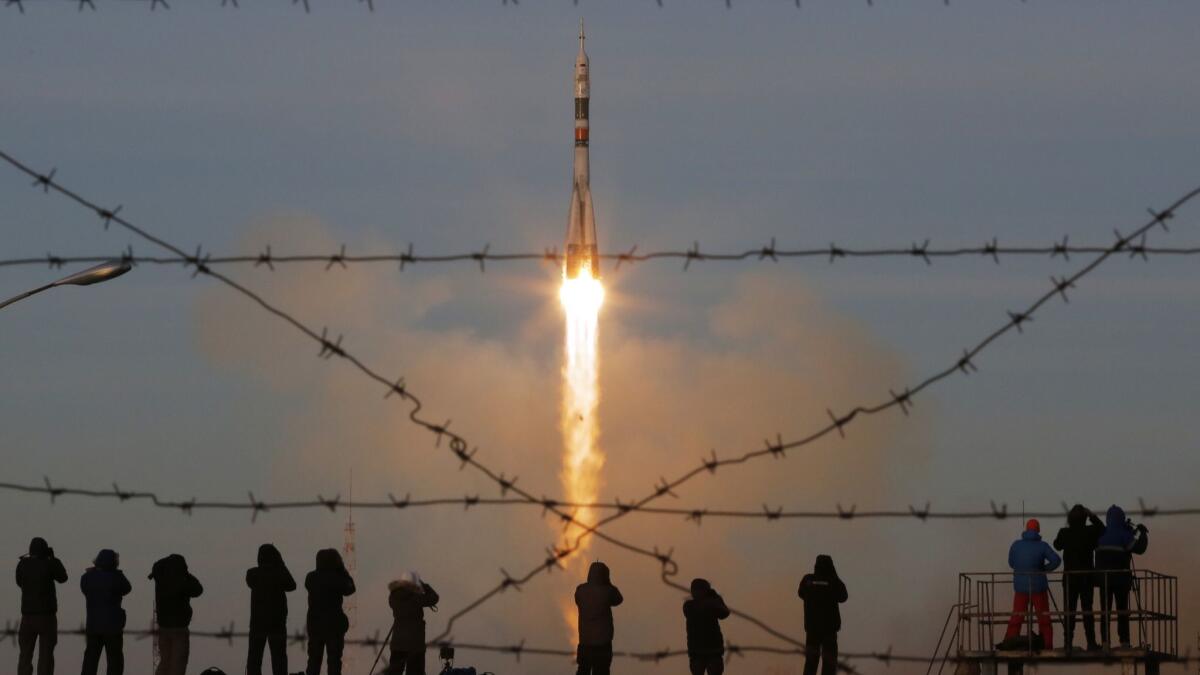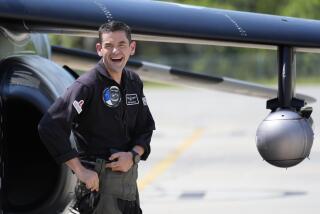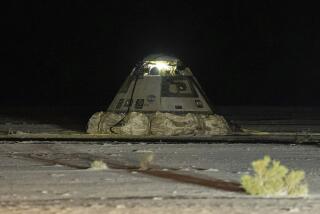Soyuz spacecraft blasts off to International Space Station with 3 astronauts, two months after failure of Russian rocket
Reporting from BAIKONUR, Kazakhstan — Three astronauts successfully blasted off Monday to the International Space Station from Kazakhstan, a perfect launch that follows October’s aborted mission.
NASA astronaut Anne McClain, David Saint-Jacques of the Canadian Space Agency and Oleg Kononenko of the Russian space agency Roscosmos lifted off as scheduled at 5:31 p.m. local time Monday from the Russian-leased Baikonur cosmodrome in Kazakhstan.
Their Soyuz MS-11 spacecraft entered a designated orbit just under nine minutes after the launch and is set to dock at the space outpost in about six hours after making four orbits of the Earth.
NASA and Roscosmos said that all onboard systems were operating normally and the crew was feeling fine.
McClain, Saint-Jacques and Kononenko will spend more than six months doing research and experiments in biology, Earth science, physical sciences and technology.
On the space station, the crew of NASA’s Serena Aunon-Chancellor, Russian Sergey Prokopyev and German Alexander Gerst were waiting for their arrival. They are scheduled to return to Earth on Dec. 20.
The families of the crew, other astronauts and space officials from several nations breathed a sigh of relief Monday after observing the flawless launch, with October’s rocket failure still on the minds of many.

A Soyuz-FG rocket carrying NASA astronaut Nick Hague and Roscosmos’ Alexei Ovchinin failed two minutes into its flight on Oct. 11, activating an automatic rescue system that sent their capsule into a steep ride back to Earth. They managed to emerge safely from a harrowing ordeal.
A Russian investigation attributed the failure to a sensor that was damaged during the rocket’s final assembly.
Russian space officials have taken measures to prevent a repeat of such incidents. Since the mishap, four successful unmanned Soyuz satellite launches have been conducted to clear the path for the crew’s launch on Monday.
NASA Administrator Jim Bridenstine tweeted his thanks to his Russian counterpart Dmitry Rogozin and to the NASA and Roscosmos teams “for their dedication to making this launch a success.”
The accident in October was the first aborted crew launch for the Russian space program since 1983, when two Soviet cosmonauts safely jettisoned after a launch pad explosion.
The Soyuz spacecraft is the only vehicle that can ferry crews to the space station, but Russia stands to lose that monopoly in coming years with the arrival of SpaceX’s Dragon and Boeing’s Starliner crew capsules.
More to Read
Sign up for Essential California
The most important California stories and recommendations in your inbox every morning.
You may occasionally receive promotional content from the Los Angeles Times.










